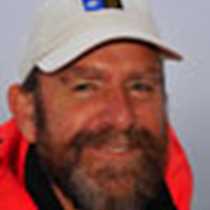Caernarvon, Wales
Last night, with a following wind and a surging sea, we surfed across the Irish Sea to a new kingdom: the land of the Red Dragon. Our cruise is following the ancient sea routes, which brought the Celts from the Mediterranean to the western fringes of Britain. We have already made landfall at two of the seven Celtic countries: Cornwall and Ireland. Today we anchored in the lee of Holyhead Mountain, to set foot on a third: Wales. Our Zodiacs brought us ashore from a wind-whipped anchorage and we were soon speeding across Anglesey, the fertile jewel that sits on the brow of Wales. Over the Menai Straits into Snowdonia proper, and along the precipitous coast road to Conway to admire the first castle of the day. Our morning destination was Bodnant Gardens, further up the estuary; here two generations of the Aberconway family have created an extraordinary setting for one of the most colourful gardens in Britain. The Italianate terraces in front of the house descend into a rocky gorge, where the rich perfume of multicolored Azaleas drifts between the trunks of soaring redwoods and cedars. Bright red blossoms splash across the vivid green of moss and fern and the swirling white of tumbling waterfalls, the colours of Wales. We then climbed high through Llanberis Pass, at the foot of Snowdon, the road squeezing between gigantic tumbled boulders from the crags above. These hills are known as Eryri in Welsh, meaning “place of eagles”. The Welsh people, the original Britons, once retreated to these hills as waves of Angles and Saxons swept in from the south and east. Our descent to the coast brought us to an enduring symbol of the English forces, which suppressed the Welsh for so long: the towering ramparts of Caernarfon Castle. But what was that fluttering from the highest flagpole? The Red Dragon, now the official flag of Wales, a standard the British borrowed from the Roman legions whose fort once stood above the town. It became a rallying symbol for the Welsh, defending their way of life against the barbarian Saxon invaders. And the battle has been won: for now the Welsh language is taught in all schools and spoken freely in the streets: 80% of this northern city speak it fluently. Driving back across Anglesey we passed through the village with one of its most mind-boggling examples: Llanfairpwllgwyngyllgogerychwyrndrobwlchllantisiliogogogoch!!! Proof if needed of the tongue tangling complexity of one of Europe’s oldest languages.
Sailing north tonight, we had a final, dazzling lightshow: the setting sun spot lit the Calf of Man. Suddenly, a full rainbow framed the green cliffs of our fourth Celtic country. In the last light, Manx shearwaters, which also take their name from this island, came arcing over the sea, weaving between the dark waves and the jeweled rainbow, overtaking us on our steady progress north.
Last night, with a following wind and a surging sea, we surfed across the Irish Sea to a new kingdom: the land of the Red Dragon. Our cruise is following the ancient sea routes, which brought the Celts from the Mediterranean to the western fringes of Britain. We have already made landfall at two of the seven Celtic countries: Cornwall and Ireland. Today we anchored in the lee of Holyhead Mountain, to set foot on a third: Wales. Our Zodiacs brought us ashore from a wind-whipped anchorage and we were soon speeding across Anglesey, the fertile jewel that sits on the brow of Wales. Over the Menai Straits into Snowdonia proper, and along the precipitous coast road to Conway to admire the first castle of the day. Our morning destination was Bodnant Gardens, further up the estuary; here two generations of the Aberconway family have created an extraordinary setting for one of the most colourful gardens in Britain. The Italianate terraces in front of the house descend into a rocky gorge, where the rich perfume of multicolored Azaleas drifts between the trunks of soaring redwoods and cedars. Bright red blossoms splash across the vivid green of moss and fern and the swirling white of tumbling waterfalls, the colours of Wales. We then climbed high through Llanberis Pass, at the foot of Snowdon, the road squeezing between gigantic tumbled boulders from the crags above. These hills are known as Eryri in Welsh, meaning “place of eagles”. The Welsh people, the original Britons, once retreated to these hills as waves of Angles and Saxons swept in from the south and east. Our descent to the coast brought us to an enduring symbol of the English forces, which suppressed the Welsh for so long: the towering ramparts of Caernarfon Castle. But what was that fluttering from the highest flagpole? The Red Dragon, now the official flag of Wales, a standard the British borrowed from the Roman legions whose fort once stood above the town. It became a rallying symbol for the Welsh, defending their way of life against the barbarian Saxon invaders. And the battle has been won: for now the Welsh language is taught in all schools and spoken freely in the streets: 80% of this northern city speak it fluently. Driving back across Anglesey we passed through the village with one of its most mind-boggling examples: Llanfairpwllgwyngyllgogerychwyrndrobwlchllantisiliogogogoch!!! Proof if needed of the tongue tangling complexity of one of Europe’s oldest languages.
Sailing north tonight, we had a final, dazzling lightshow: the setting sun spot lit the Calf of Man. Suddenly, a full rainbow framed the green cliffs of our fourth Celtic country. In the last light, Manx shearwaters, which also take their name from this island, came arcing over the sea, weaving between the dark waves and the jeweled rainbow, overtaking us on our steady progress north.




